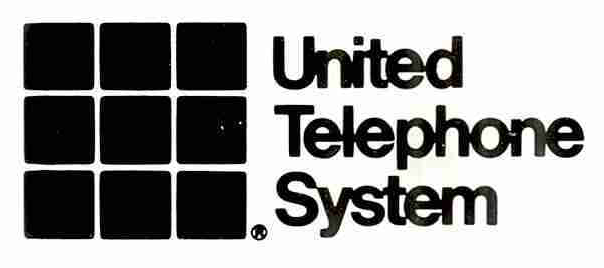|
Graphik (typeface)
Graphik is a neo-grotesque sans-serif typeface designed by Christian Schwartz and published by Commercial Type in 2009. It is currently used as Accenture's, Snap Inc.'s, and Sprint's official typeface. Eighteen styles are included with macOS. The retail version supports Latin, Cyrillic, Greek, Arabic, Armenian, Georgian, Hebrew, and Thai. In 2014 Commercial Type introduced a slab serif In typography, a slab serif (also called ''mechanistic'', ''square serif'', ''antique'' or ''Egyptian'') typeface is a type of serif typeface characterized by thick, block-like serifs. Serif terminals may be either blunt and angular ( Rockwell), ... companion typeface, Produkt, designed by Berton Hasebe. References {{Typography-stub Neo-grotesque sans-serif typefaces Typefaces designed by Christian Schwartz Unified serif and sans-serif typeface families ... [...More Info...] [...Related Items...] OR: [Wikipedia] [Google] [Baidu] |
Christian Schwartz
Christian Schwartz (born December 30, 1977 in Concord, New Hampshire, United States) is an American type designer. He has been awarded the German Design Award and the Prix Charles Peignot. Life A graduate of the Communication Design program at Carnegie Mellon University, Schwartz first worked at MetaDesign Berlin, developing typefaces for Volkswagen and logos for various corporations. He then returned to the US and joined the design staff at Font Bureau. Schwartz has worked independently in 2001, first forming Orange Italic with product designer Dino Sanchez and recently Schwartzco Inc. He has released commercial fonts with Village, FontFont, Emigre, House Industries and Font Bureau. Many of Schwartz’s typefaces have been proprietary designs for corporations such as Bosch and Deutsche Bahn, both with noted designer Erik Spiekermann, and EMI, for the marketing of George Harrison’s posthumous final album. Schwartz has also designed typefaces for many publications includi ... [...More Info...] [...Related Items...] OR: [Wikipedia] [Google] [Baidu] |
Commercial Type
Commercial Type is a digital type foundry established in 2007 by type designers Paul Barnes and Christian Schwartz. Its work includes typefaces for ''The Guardian'', such as the Guardian Egyptian series, and other retail and commissioned typefaces. It created the open-source Roboto Serif typeface for Google and several of its typefaces are bundled with macOS macOS (; previously OS X and originally Mac OS X) is a Unix operating system developed and marketed by Apple Inc. since 2001. It is the primary operating system for Apple's Mac computers. Within the market of desktop and lapt .... References External links * * {{authority control Commercial type foundries Design companies established in 2007 Graphic design studios Companies based in Manhattan 2007 establishments in New York City ... [...More Info...] [...Related Items...] OR: [Wikipedia] [Google] [Baidu] |
Neo-grotesque
In typography and lettering, a sans-serif, sans serif, gothic, or simply sans letterform is one that does not have extending features called "serifs" at the end of strokes. Sans-serif typefaces tend to have less stroke width variation than serif typefaces. They are often used to convey simplicity and modernity or minimalism. Sans-serif typefaces have become the most prevalent for display of text on computer screens. On lower-resolution digital displays, fine details like serifs may disappear or appear too large. The term comes from the French word , meaning "without" and "serif" of uncertain origin, possibly from the Dutch word meaning "line" or pen-stroke. In printed media, they are more commonly used for display use and less for body text. Before the term "sans-serif" became common in English typography, a number of other terms had been used. One of these outmoded terms for sans-serif was gothic, which is still used in East Asian typography and sometimes seen in typeface na ... [...More Info...] [...Related Items...] OR: [Wikipedia] [Google] [Baidu] |
Typeface
A typeface (or font family) is the design of lettering that can include variations in size, weight (e.g. bold), slope (e.g. italic), width (e.g. condensed), and so on. Each of these variations of the typeface is a font. There are list of typefaces, thousands of different typefaces in existence, with new ones being developed constantly. The art and craft of designing typefaces is called ''type design''. Designers of typefaces are called ''type designers'' and are often employed by ''type foundry, type foundries''. In desktop publishing, type designers are sometimes also called ''font developers'' or ''font designers''. Every typeface is a collection of glyphs, each of which represents an individual letter, number, punctuation mark, or other symbol. The same glyph may be used for character (symbol), characters from different scripts, e.g. Roman uppercase A looks the same as Cyrillic uppercase А and Greek uppercase alpha. There are typefaces tailored for special applications, s ... [...More Info...] [...Related Items...] OR: [Wikipedia] [Google] [Baidu] |
Accenture
Accenture plc is an Irish-American professional services company based in Dublin, specializing in information technology (IT) services and consulting. A ''Fortune'' Global 500 company, it reported revenues of $61.6 billion in 2022. Accenture's current clients include 91 of the Fortune Global 100 and more than three-quarters of the Fortune Global 500. As of 2022, Accenture is considered the largest consulting firm in the world by number of employees. Julie Sweet has served as CEO of Accenture since 1 September 2019. It has been incorporated in Dublin, Ireland, since 2009. History Formation and early years Accenture began as the business and technology consulting division of accounting firm Arthur Andersen in the early 1950s when it conducted a feasibility study for General Electric to install a computer at Appliance Park in Louisville, Kentucky, which led to GE's installation of a UNIVAC I computer and printer, believed to be the first commercial use of a computer in ... [...More Info...] [...Related Items...] OR: [Wikipedia] [Google] [Baidu] |
Snap Inc
Snap Inc. is an American camera and social media company, founded on September 16, 2011, by Evan Spiegel, Bobby Murphy, and Reggie Brown based in Santa Monica, California. The company developed and maintains technological products and services, namely Snapchat, Spectacles, and Bitmoji. The company was named Snapchat Inc. at its inception, but it was rebranded Snap Inc. on September 24, 2016, in order to include the Spectacles product under the company name. The founders own a combined 95% of voting shares (Spiegel with 48% and Murphy with 47%), which are undiluted and transferable to the other when one retires or dies. History The company was founded on September 16, 2011, by Evan Spiegel and Bobby Murphy upon the relaunch of the photo sharing app Picaboo as Snapchat. On December 31, 2013, the application was hacked and 4.6 million usernames and phone numbers were leaked to the Internet. Also in December 2013, Emily White, who had been a high-profile executive with Faceboo ... [...More Info...] [...Related Items...] OR: [Wikipedia] [Google] [Baidu] |
Sprint Corporation
Sprint Corporation was an American telecommunications company. Before it Merger of Sprint Corporation and T-Mobile US, merged with T-Mobile US on April 1, 2020, it was the fourth-largest mobile network operator in the United States, serving 54.3 million customers as of June 30, 2019. The company also offered wireless voice, messaging, and broadband services through its various subsidiaries under the Boost Mobile (United States), Boost Mobile and Open Mobile brands and wholesale access to its wireless networks to mobile virtual network operators. In July 2013, a majority of the company was purchased by the Japanese telecommunications company SoftBank Group. Sprint used CDMA2000, CDMA, Evolution-Data Optimized, EvDO and LTE (telecommunication), 4G LTE networks, and formerly operated iDEN, WiMAX, and 5G NR networks. Sprint was incorporated in Kansas. Sprint traced its origins to the Brown Telephone Company, which was founded in 1899 to bring telephone service to the rural area arou ... [...More Info...] [...Related Items...] OR: [Wikipedia] [Google] [Baidu] |
MacOS
macOS (; previously OS X and originally Mac OS X) is a Unix operating system developed and marketed by Apple Inc. since 2001. It is the primary operating system for Apple's Mac computers. Within the market of desktop and laptop computers it is the second most widely used desktop OS, after Microsoft Windows and ahead of ChromeOS. macOS succeeded the classic Mac OS, a Mac operating system with nine releases from 1984 to 1999. During this time, Apple cofounder Steve Jobs had left Apple and started another company, NeXT, developing the NeXTSTEP platform that would later be acquired by Apple to form the basis of macOS. The first desktop version, Mac OS X 10.0, was released in March 2001, with its first update, 10.1, arriving later that year. All releases from Mac OS X 10.5 Leopard and after are UNIX 03 certified, with an exception for OS X 10.7 Lion. Apple's other operating systems (iOS, iPadOS, watchOS, tvOS, audioOS) are derivatives of macOS. A promi ... [...More Info...] [...Related Items...] OR: [Wikipedia] [Google] [Baidu] |
Slab Serif
In typography, a slab serif (also called ''mechanistic'', ''square serif'', ''antique'' or ''Egyptian'') typeface is a type of serif typeface characterized by thick, block-like serifs. Serif terminals may be either blunt and angular ( Rockwell), or rounded (Courier). Slab serifs were introduced in the early nineteenth century. Slab serifs form a large and varied genre. Some such as Memphis and Rockwell have a geometric design with minimal variation in stroke width: they are sometimes described as sans-serif fonts with added serifs. Others such as those of the Clarendon genre have a structure more like most other serif fonts, though with larger and more obvious serifs. These designs may have bracketed serifs which increase width along their length before merging with the main strokes of the letters, while on geometrics the serifs have a constant width. Display-oriented slab serifs are often extremely bold, intended to grab the reader's attention on a poster, while slab serifs or ... [...More Info...] [...Related Items...] OR: [Wikipedia] [Google] [Baidu] |
Neo-grotesque Sans-serif Typefaces
In typography and lettering, a sans-serif, sans serif, gothic, or simply sans letterform is one that does not have extending features called " serifs" at the end of strokes. Sans-serif typefaces tend to have less stroke width variation than serif typefaces. They are often used to convey simplicity and modernity or minimalism. Sans-serif typefaces have become the most prevalent for display of text on computer screens. On lower-resolution digital displays, fine details like serifs may disappear or appear too large. The term comes from the French word , meaning "without" and "serif" of uncertain origin, possibly from the Dutch word meaning "line" or pen-stroke. In printed media, they are more commonly used for display use and less for body text. Before the term "sans-serif" became common in English typography, a number of other terms had been used. One of these outmoded terms for sans-serif was gothic, which is still used in East Asian typography and sometimes seen in typeface ... [...More Info...] [...Related Items...] OR: [Wikipedia] [Google] [Baidu] |
Typefaces Designed By Christian Schwartz
A typeface (or font family) is the design of lettering that can include variations in size, weight (e.g. bold), slope (e.g. italic), width (e.g. condensed), and so on. Each of these variations of the typeface is a font. There are thousands of different typefaces in existence, with new ones being developed constantly. The art and craft of designing typefaces is called ''type design''. Designers of typefaces are called '' type designers'' and are often employed by ''type foundries''. In desktop publishing, type designers are sometimes also called ''font developers'' or ''font designers''. Every typeface is a collection of glyphs, each of which represents an individual letter, number, punctuation mark, or other symbol. The same glyph may be used for characters from different scripts, e.g. Roman uppercase A looks the same as Cyrillic uppercase А and Greek uppercase alpha. There are typefaces tailored for special applications, such as cartography, astrology or mathematics. Te ... [...More Info...] [...Related Items...] OR: [Wikipedia] [Google] [Baidu] |





